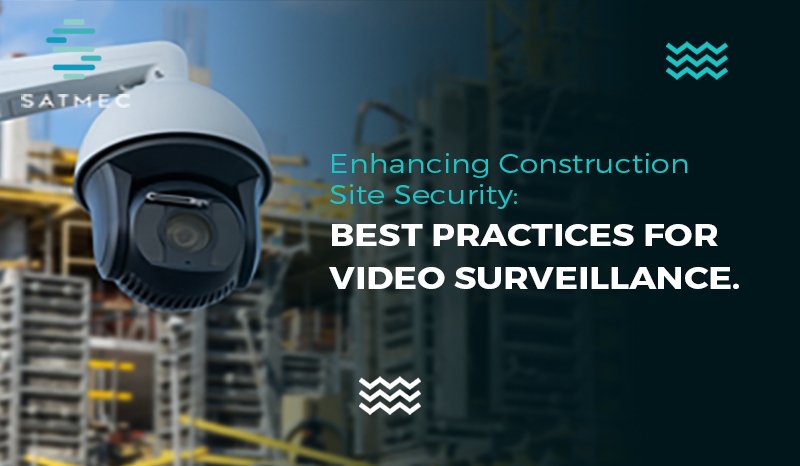Construction sites are bustling hubs of activity, often with valuable equipment and materials on-site. This makes them prime targets for theft, vandalism, and other security breaches. Implementing a robust video surveillance system is essential for safeguarding these sites. In this blog, we will explore the best practices for video surveillance to enhance construction site security.
1. Strategic Camera Placement
Proper camera placement is crucial for maximizing coverage and minimizing blind spots. Focus on high-risk areas such as entrances, exits, storage areas, and places where valuable equipment is kept. Elevate cameras to prevent tampering and ensure a clear view. Using wide-angle lenses can also help cover larger areas with fewer cameras.
2. High-Resolution Cameras
Investing in high-resolution cameras is vital for capturing clear, detailed footage. This is especially important in identifying individuals and vehicles involved in any incidents. Look for cameras with at least 1080p resolution to ensure high-quality video that can be useful for investigations and legal proceedings.
3. Remote Monitoring
Modern video surveillance systems offer remote monitoring capabilities, allowing you to keep an eye on your construction site from anywhere. This feature is particularly useful for project managers and security personnel who can’t always be on-site. Remote access also enables quick response to any incidents, potentially preventing losses or damage.
4. Motion Detection and Alerts
Motion detection technology can significantly enhance security by alerting you to any unusual activity. These alerts can be sent directly to your phone or email, enabling prompt action. Integrating motion detection with smart analytics can also help differentiate between legitimate movements (like workers) and potential threats (like intruders).
5. Regular Maintenance and Testing
Regularly maintaining and testing your video surveillance system ensures it functions optimally. This includes checking camera lenses for cleanliness, ensuring proper recording, and updating firmware. Regular audits can help identify and address any issues before they compromise your site’s security.
6. Integrating with Other Security Systems
For comprehensive security, consider integrating your video surveillance system with other security measures like alarms, access control systems, and lighting. This multi-layered approach provides additional protection and enhances the effectiveness of each component.
7. Data Storage and Management
Proper data storage and management are critical for video surveillance. Ensure your system has sufficient storage capacity to retain footage for an adequate period, typically at least 30 days. Cloud storage can offer scalable solutions, making it easier to access and manage video data. Additionally, ensure compliance with data protection regulations to safeguard privacy and security.
8. Security Personnel Training
Even the best video surveillance system can be ineffective without trained personnel to monitor and respond to alerts. Ensure your security team is well-trained in operating the surveillance system, identifying potential threats, and responding appropriately. Regular training updates can keep the team informed about new features and best practices.
Conclusion
Enhancing construction site security with video surveillance is a crucial step in protecting valuable assets and ensuring a safe working environment. By following these best practices, you can create a comprehensive security strategy that deters criminal activity and provides peace of mind.


